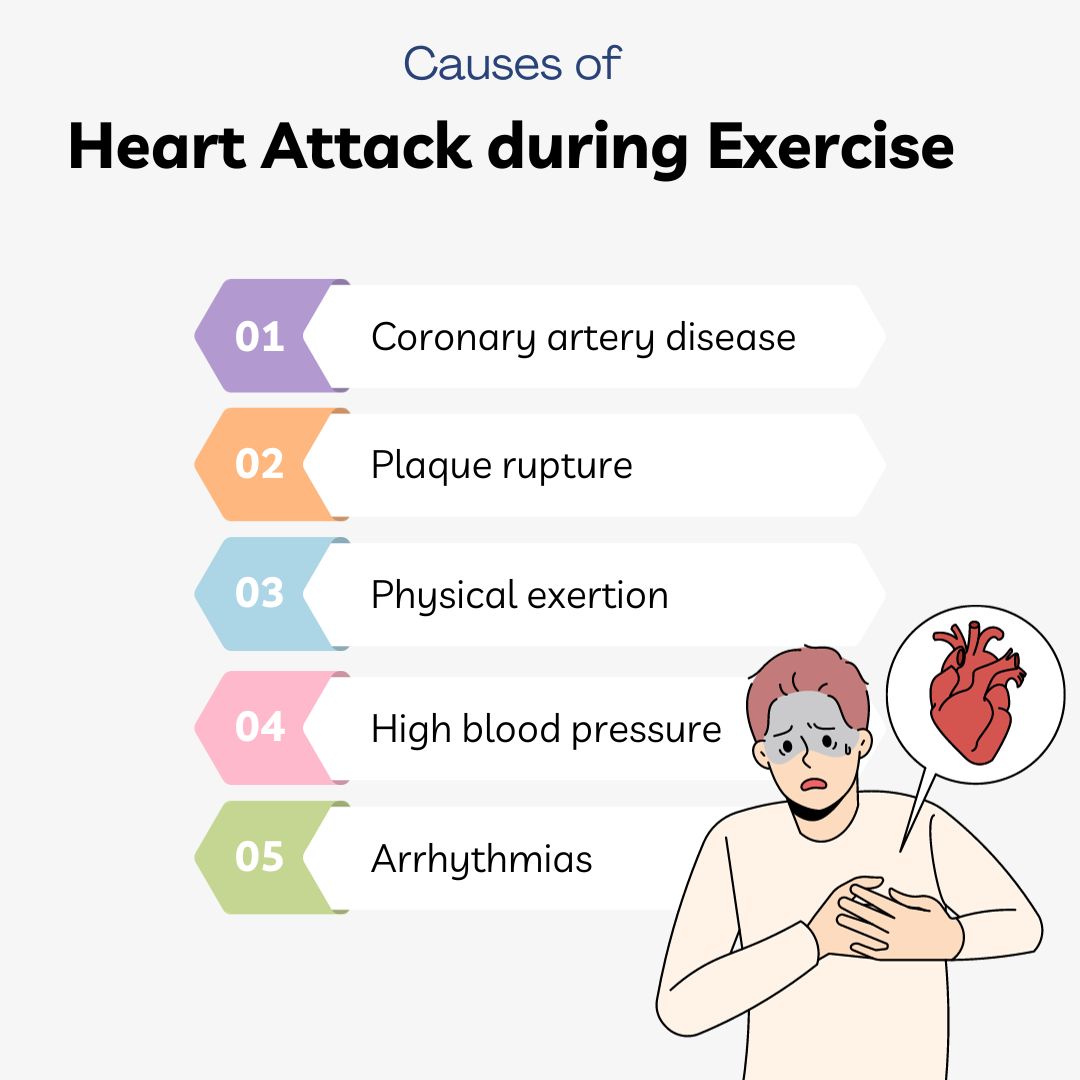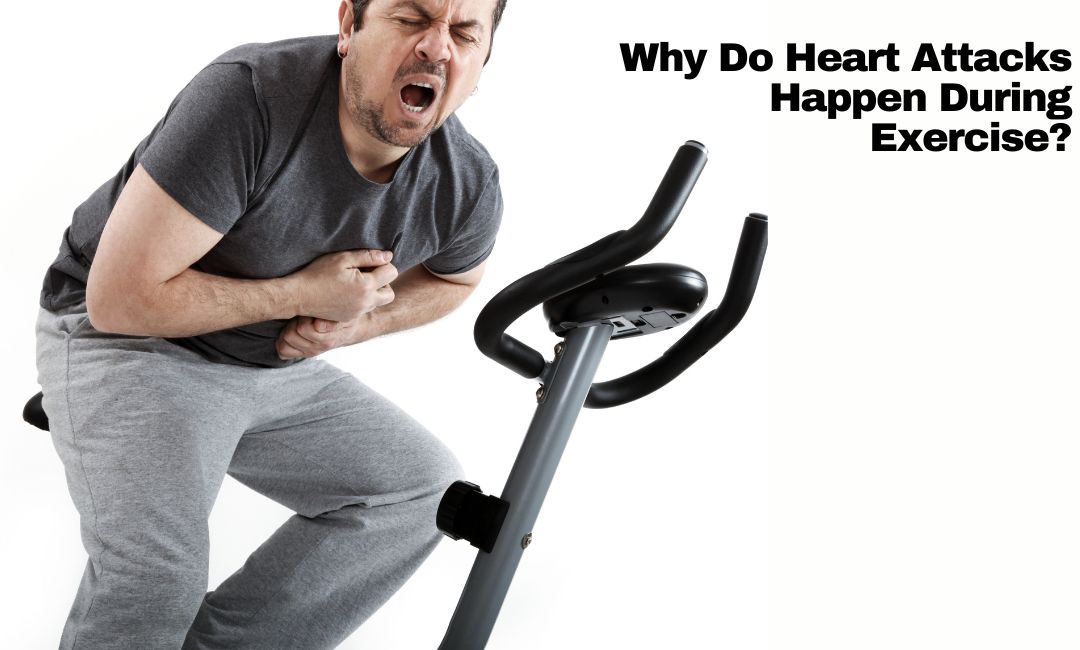Experiencing a heart attack during exercise can be a distressing and potentially life-threatening event. Physical exertion puts added stress on the heart, and in individuals with underlying heart conditions, this stress can trigger a heart attack. When a heart attack occurs during exercise, the symptoms may include intense chest pain or discomfort, shortness of breath, dizziness, nausea, and even pain radiating to the arms, neck, jaw, or back. It's crucial to recognize these warning signs promptly, especially during physical activity, as ignoring them or pushing through the pain can exacerbate the situation.
Immediate action is essential when suspecting a heart attack during exercise. Stop the physical activity immediately and seek emergency medical help by calling emergency services. If you or someone else is experiencing symptoms suggestive of a heart attack, it's crucial to chew and swallow an aspirin if not allergic, as it can help reduce blood clotting. Staying calm and avoiding any exertion is vital while waiting for medical assistance to arrive. Prompt medical intervention significantly improves the chances of survival and minimizes potential damage to the heart muscle.
Always consult with a Cardiology for personalized advice and guidance concerning any health concerns, especially when it comes to matters related to the heart and cardiovascular health.
Causes of Heart Attack during Exercise
Coronary artery disease (CAD): CAD occurs when the blood vessels supplying the heart muscle with oxygen-rich blood become narrowed or blocked due to the buildup of plaque (atherosclerosis). During exercise, the heart requires more blood flow and oxygen, and if the arteries are already narrowed, a clot can form, leading to a heart attack.
Plaque rupture: Sometimes, the plaque buildup in the arteries can rupture or break open, leading to the formation of a blood clot. When this clot blocks an artery that supplies blood to a part of the heart, it can cause a heart attack, especially when the demand for blood flow increases during exercise.
Stress on the heart: Intense physical activity or sudden vigorous exercise, especially for individuals who are not regularly active, can put excessive stress on the heart. This stress can lead to an increased demand for oxygen and blood flow to the heart. If the heart's blood supply is compromised due to underlying conditions, it can trigger a heart attack.
High blood pressure (hypertension): Uncontrolled high blood pressure can damage the arteries over time, making them more susceptible to plaque buildup. During exercise, elevated blood pressure combined with narrowed arteries can increase the risk of a heart attack.
Arrhythmias: Abnormal heart rhythms, such as ventricular fibrillation or tachycardia, can occur during physical exertion. These irregular heartbeats can interfere with the heart's ability to pump blood effectively, leading to a sudden cardiac event like a heart attack.
Undiagnosed heart conditions: Some individuals might have undetected heart conditions, such as congenital heart defects or other structural abnormalities, which can increase the risk of experiencing a heart attack during exercise.
Lifestyle factors: Smoking, a sedentary lifestyle, obesity, poor diet, excessive alcohol consumption, and stress can contribute to the development of cardiovascular diseases, thereby increasing the risk of a heart attack during exercise.

Who is at Risk for a Heart Attack While Exercising?
While exercise is generally beneficial for heart health, certain individuals might be at an increased risk of experiencing a heart attack during physical activity. The following factors can contribute to a higher risk:
Underlying Heart Conditions: Individuals with existing heart conditions such as coronary artery disease, a history of heart attack, heart failure, arrhythmias, or congenital heart defects might be more susceptible.
Family History: A family history of heart disease or sudden cardiac events can increase the risk for the individual.
Age: As people age, the risk of heart disease generally increases. Older individuals might have a higher likelihood of experiencing a heart attack during exercise.
Sedentary Lifestyle: Lack of regular physical activity can lead to a higher risk of heart disease, and sudden vigorous exercise in previously sedentary individuals might strain the heart.
Smoking: Smoking is a major risk factor for heart disease. Smokers might be more prone to experiencing a heart attack during exercise due to the strain it places on the cardiovascular system.
High Blood Pressure: Uncontrolled hypertension can increase the risk of heart attack during exercise.
High Cholesterol Levels: Elevated levels of LDL cholesterol (often referred to as "bad" cholesterol) can contribute to the formation of plaques in the arteries, increasing the risk of heart attacks.
Diabetes: Individuals with diabetes are at higher risk of heart disease and might be more vulnerable to a heart attack during exercise.
Obesity or Overweight: Excess weight can strain the heart and increase the risk of heart disease, especially if combined with other risk factors.
Preventive Measures
Experiencing a heart attack during exercise is a frightening possibility, but there are measures you can take to lower the risk. Here are some preventive measures:
Gradual Progression: Start slowly and gradually increase the intensity, duration, and frequency of your workouts. Allow your body to adapt to the physical demands of exercise over time.
Warm-up and Cool Down: Always warm up before exercising to prepare your muscles and cardiovascular system. Similarly, cool down after your workout to help your body gradually return to its resting state.
Know Your Limits: Listen to your body and don’t overexert yourself. Pushing too hard beyond your fitness level can strain your heart and increase the risk of a heart attack.
Stay Hydrated: Maintain proper hydration levels before, during, and after exercising. Dehydration can strain your heart and affect your overall performance.
Healthy Lifestyle: Adopt a heart-healthy lifestyle by eating a balanced diet rich in fruits, vegetables, whole grains, lean protein, and healthy fats. Avoid excessive consumption of processed foods, sugary drinks, and high-fat meals.
Maintain a Healthy Weight: Aim for a healthy weight range as excess body weight can strain your heart and increase the risk of heart-related issues.
Regular Exercise: Engage in regular physical activity as it strengthens the heart muscle and improves overall cardiovascular health. Aim for at least 150 minutes of moderate-intensity exercise per week or as recommended by your healthcare provider.
Know the Warning Signs: Be aware of the warning signs of a heart attack such as chest pain or discomfort, shortness of breath, nausea, lightheadedness, or pain in the arm, neck, jaw, or back. If you experience any of these symptoms, stop exercising immediately and seek medical help.
Regular Health Check-ups: Schedule regular check-ups with your healthcare provider to monitor your heart health and discuss any concerns or changes in your physical condition.
When to Seek Medical Attention
If you're exercising and experience symptoms that could be indicative of a heart attack, it's crucial to take immediate action. Here are some signs to look out for and when to seek medical attention:
Chest Discomfort or Pain: This is the most common symptom. It might feel like pressure, squeezing, fullness, or pain in the center of the chest that lasts for a few minutes or comes and goes.
Discomfort in Other Areas: Pain or discomfort in one or both arms, the back, neck, jaw, or stomach.
Shortness of Breath: This may occur with or without chest discomfort.
Other Symptoms: Other signs might include nausea, lightheadedness, or breaking out in a cold sweat.
If you experience any of these symptoms while exercising:
Stop the Activity: Cease exercising immediately and rest.
Call Emergency Services: If you suspect you're having a heart attack, don’t hesitate to call for emergency medical assistance immediately.
Follow Instructions: If you've been prescribed nitroglycerin for chest pain, take it as directed by your healthcare provider.
It's important not to ignore these symptoms or delay seeking medical help. Every minute counts during a heart attack, and prompt treatment can significantly improve the chances of survival and minimize damage to the heart.
Remember, while exercising is generally beneficial for heart health, it's essential to know your limits, gradually increase intensity, and pay attention to warning signs your body might give you during physical activity. Always consult with a healthcare professional before starting any new exercise regimen, especially if you have any pre-existing heart conditions or concerns.
Always consult with a Cardiology for personalized advice and guidance concerning any health concerns, especially when it comes to matters related to the heart and cardiovascular health.
Related Blog Articles:
1. The Silent Threat: How Chronic Stress Impacts Your Cardiovascular System
2. Unmasking the Rising Tide of Heart Attacks Among Young Adults
.webp)














